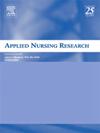评估护士与病人比例立法以提高病人安全和护理质量:一项混合方法的政策研究
IF 2.7
4区 医学
Q1 NURSING
引用次数: 0
摘要
护士人手不足是一个全球性问题,特别是在资源匮乏的地区。高工作量与增加的感染率、再入院率和不良临床事件有关。约旦医院长期面临人手不足、护士移徙和监管监督有限的问题。目的本研究旨在评估约旦医院实施标准化护士与患者比例对患者预后和护理质量的影响,并根据国际模式评估国家立法的可行性。方法采用混合方法设计。定量分析包括2021年至2024年间四家急症医院的行政数据,重点关注患者安全指标,如感染率、再入院率和住院时间。采用半结构化访谈收集22名行政和临床利益相关者的定性数据。美国护士协会的价值观和疾病控制和预防中心的政策分析框架在研究中被用来指导评估。结果与人员配备不足的单位相比,每名护士配备5名或更少患者的单位具有明显更好的结果,包括感染率降低55%,再入院人数减少近一半。访谈参与者强调了安全人员配备的系统性障碍,包括有限的预算、移民驱动的短缺和严格的等级文化。然而,在支持适应患者敏锐度和护理环境的规范人员配备标准方面存在广泛的共识。结论约旦护患比例标准化可显著提高患者安全和护理质量,但需要分阶段立法、动态调整和劳动力发展投资才能成功实施。本文章由计算机程序翻译,如有差异,请以英文原文为准。
Evaluating nurse-to-patient ratio legislation to improve patient safety and care quality: A mixed-methods policy study
Background
Insufficient nurse staffing is a global issue, especially in lower-resource settings. High workloads are linked to increased infection rates, readmissions, and adverse clinical events. Jordanian hospitals face chronic understaffing, nurse migration, and limited regulatory oversight.
Objective
This study aimed to assess the impact of implementing standardized nurse-to-patient ratios on patient outcomes and care quality in Jordanian hospitals, and to evaluate the feasibility of national legislation based on international models.
Methods
A mixed-methods design was employed. Quantitative analysis included administrative data from four acute care hospitals between 2021 and 2024, focusing on patient safety indicators such as infection rates, readmissions, and hospital stays. Semi-structured interviews were used to gather qualitative data from 22 administrative and clinical stakeholders. American Nurses Association values and the Centers for Disease Control and Prevention's Policy Analysis Framework were used in the study to direct evaluation.
Results
Units with staffing ratios of five or fewer patients per nurse had significantly better outcomes, including 55 % lower infection rates and nearly half the number of readmissions compared to poorly staffed units. Interview participants highlighted systemic barriers to safe staffing, including limited budgets, migration-driven shortages, and rigid hierarchical cultures. However, there was broad consensus in support of regulated staffing standards adapted to patient acuity and care setting.
Conclusion
The study suggests that standardizing nurse-to-patient ratios in Jordan can significantly enhance patient safety and care quality, but requires phased legislation, dynamic acuity adjustments, and workforce development investment for successful implementation.
求助全文
通过发布文献求助,成功后即可免费获取论文全文。
去求助
来源期刊

Applied Nursing Research
医学-护理
CiteScore
4.50
自引率
0.00%
发文量
65
审稿时长
70 days
期刊介绍:
Applied Nursing Research presents original, peer-reviewed research findings clearly and directly for clinical applications in all nursing specialties. Regular features include "Ask the Experts," research briefs, clinical methods, book reviews, news and announcements, and an editorial section. Applied Nursing Research covers such areas as pain management, patient education, discharge planning, nursing diagnosis, job stress in nursing, nursing influence on length of hospital stay, and nurse/physician collaboration.
 求助内容:
求助内容: 应助结果提醒方式:
应助结果提醒方式:


